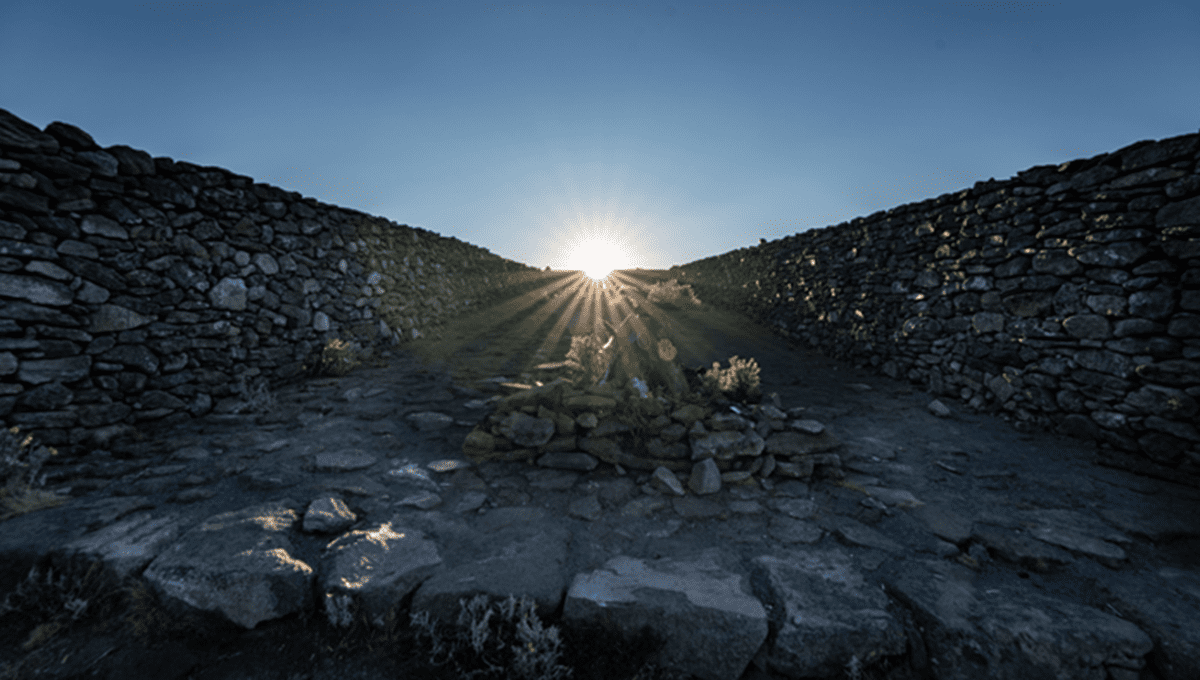
Ancient inhabitants of the Basin of Mexico used it as a precise solar observatory in order to keep track of the time of year, a new study has concluded. Using the landscape as a calendar, the ancient people were able to plant crops at the correct time of year, and feed a large human population of between 1 and 3 million people.
Before the Spanish invaded in 1519, the study authors write, the Mexica of the Basin of Mexico were able to feed themselves using sophisticated agriculture systems. Farming in the Basin wasn’t easy, and relied on being able to predict the seasons. Plant too early, for instance during early rains before the monsoon season, and it will be disastrous for the crops. Plant too late and the growing season will be shortened, and your crops will battle weeds that have already established themselves during the rain.
As was documented by colonial invaders, the Aztecs were able to keep track of the year incredibly precisely, and may even have known to add in a leap day every four years in order to keep the calendar aligned with the astronomical seasons. What isn’t known is exactly how, but according to the team from the University of California, Riverside, it is likely that they used the mountains of the Basin as a “solar observatory”, using the position of the Sun to keep track of the seasons.
“We concluded they must have stood at a single spot, looking eastwards from one day to another, to tell the time of year by watching the rising sun,” professor of ecology Exequiel Ezcurra, who led the research, said in a statement.
“Our hypothesis is that they used the whole Valley of Mexico. Their working instrument was the Basin itself. When the sun rose at a landmark point behind the Sierras, they knew it was time to start planting.”
Ancient codices, including the Codex Tovar, Codex Borbonicus, and the Wheel of Boban, make references linking Mount Tlaloc and the first day of the new calendar year, while Spanish writers report that the new year was celebrated when the Sun appeared over a certain mountain.
Using astronomical models and maps of the area, the team was able to simulate the position of the Sun during every day, right back to 4712 BCE. They were able to figure out that on February 24, the first day of the Aztec new year, a temple at the mountain’s summit and a long causeway structure at its base aligns with the rising sun.
“On February 24, 2022, we ascended Mount Tlaloc, camped close to the peak, and climbed to the summit to explore the ancient ceremonial structure,” the team wrote in their paper.
“The following day, we ascended the peak once again in the early morning, while still dark, to test the alignment of the rising sun with the stone-walled causeway.”
The team believes that the precise alignment during the Aztec new year suggests the ancient people were using the basin, as well as man-made structures, to keep a precise track of the calendar.
“These results confirm that, even without the celestial instruments used by Europeans at the time of their arrival (e.g., gnomon, compass, quadrant, and astrolabe),” the team concludes, “the people in the Basin of Mexico could maintain an extremely precise calendar that would have allowed for leap-year adjustments simply by using systematic observations of sunrise against the eastern mountains of the Basin of Mexico.”
“These results underscore how a similar goal, such as adjusting the length of the calendar to the solar year,” they added, “could be achieved with widely different technologies”.
The study is published in Proceedings of the National Academy of Sciences.
Source Link: Ancient Aztecs Used The Basin Of Mexico As A Solar Observatory